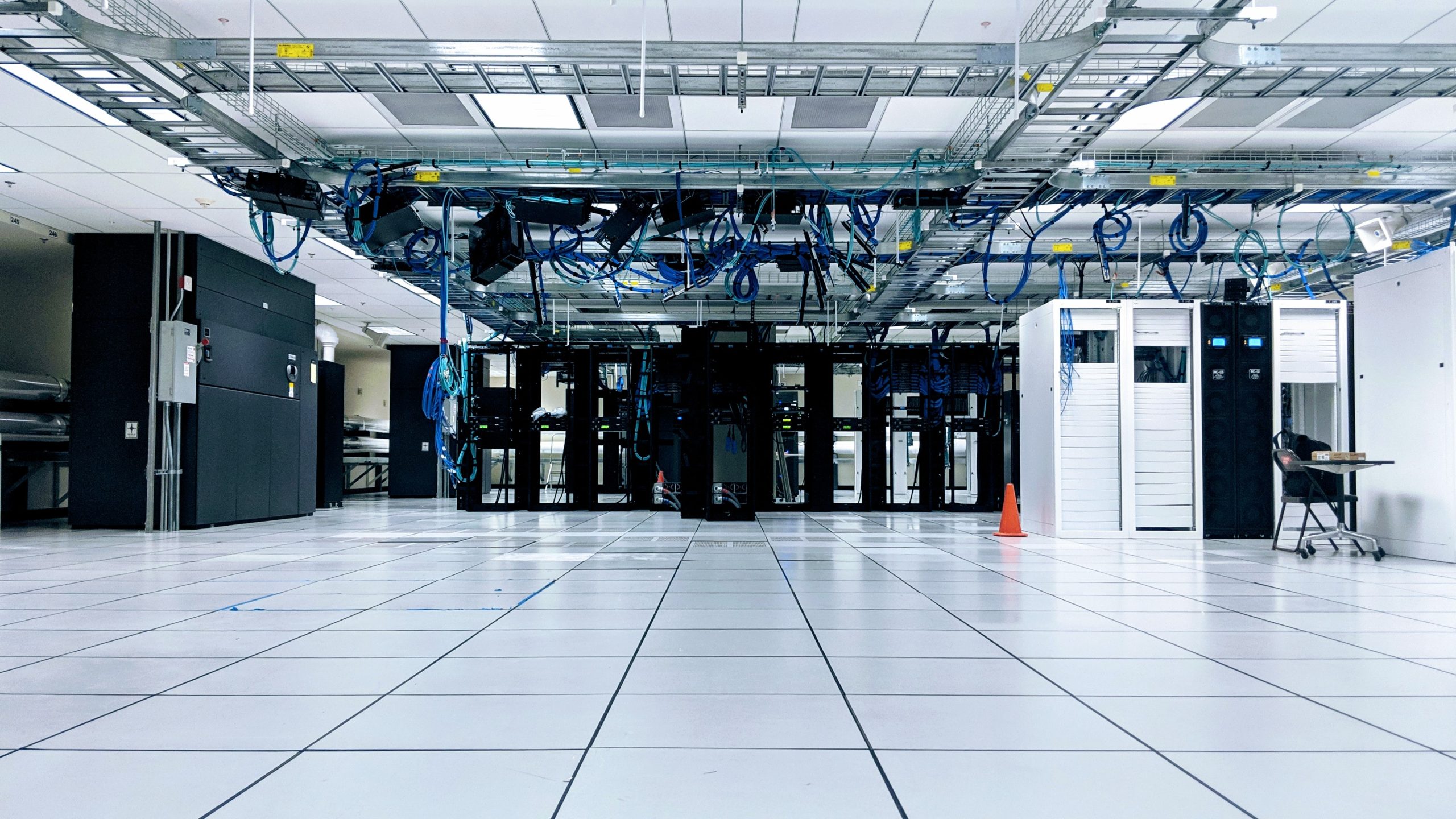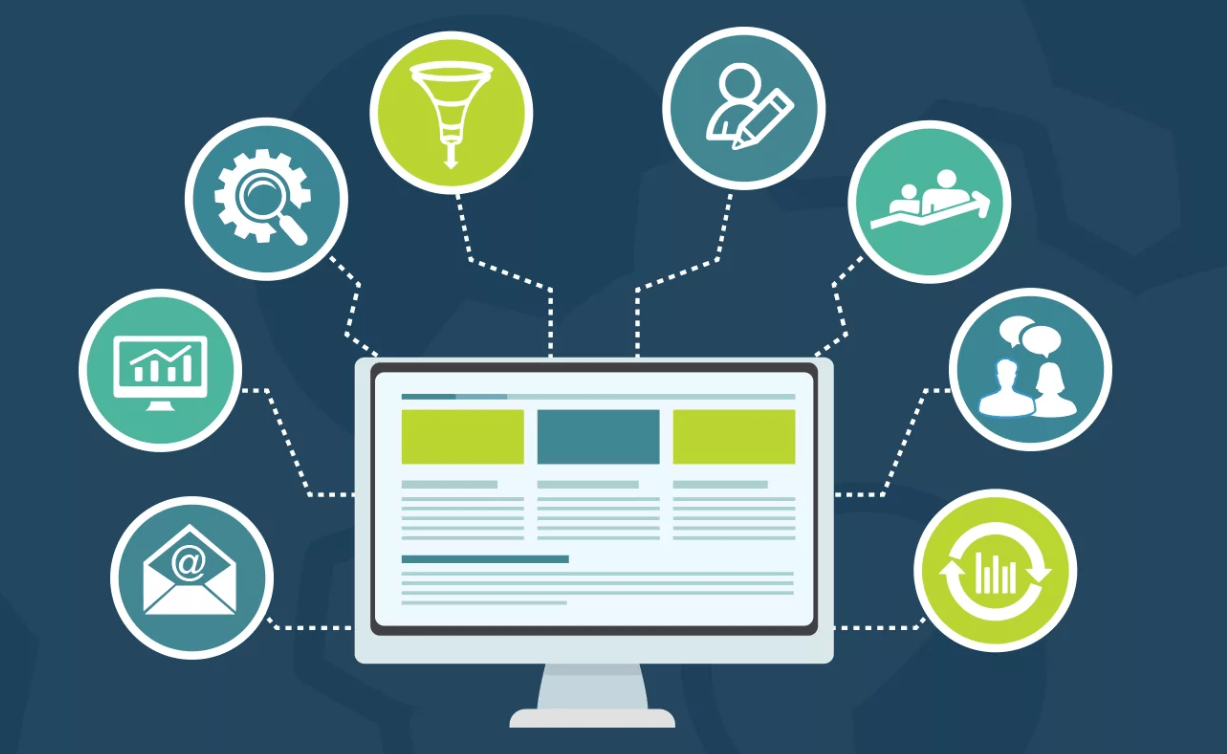Internet and Telecom
Cloud Computing 2023: How Will It Change The Way We Do Business?

Cloud computing is one of the most important technological developments of the last few decades. It has completely changed the way businesses operate and will continue to shape how we do business for years to come. As we look ahead to 2023, it’s worth considering what changes cloud computing could bring about in the near future. Will it make businesses more efficient? More secure? Or create new opportunities that didn’t exist before? In this blog post, we’ll explore some of the ways cloud computing may shape the way we do business in 2023, and what trends to look out for in terms of adoption and application. Read on to learn more!
What is cloud computing?
1. What is cloud computing?
Cloud computing is a model for enabling convenient, on-demand network access to a shared pool of configurable computing resources (e.g., networks, servers, storage, applications, and services). This technology allows businesses to scale their IT operations and reduce costs by using remote data centers and sharing resources across multiple users.
The different types of cloud computing
There are three different types of cloud computing: public, private, and hybrid. Public cloud computing is when a service provider makes resources, such as applications and storage, available to the general public over the Internet. Private cloud computing is when a company provides cloud-based services to only its employees or customers. Hybrid cloud computing is when a company uses a combination of public and private clouds to create a single, unified system.
How will cloud computing change the way we do business?
As businesses increasingly move operations to the cloud, they will need to adapt their strategies and processes to take advantage of the new opportunities and challenges posed by this shift. Cloud computing will change the way businesses interact with customers, partners, and employees; how they store, process, and analyze data; and how they manage applications and infrastructure. The following sections explore some of the key ways in which cloud computing will change the way we do business.
Customer interactions: The cloud will enable businesses to interact with their customers in new and innovative ways. For example, businesses will be able to offer personalized services and tailor their products to individual customer needs. They will also be able to provide real-time customer support through chatbots and AI-powered virtual assistants.
Partner interactions: The cloud will make it easier for businesses to partner with other organizations, as well as share data and applications securely between them. This will enable companies to create new business models and go-to-market strategies. For example, two companies could partner to offer a combined product or service that neither could have offered on its own.
Employee interactions: The cloud will allow businesses to better connect with their employees, regardless of location. Employees will be able to access company data and applications from anywhere at any time. This will improve productivity and allow for more flexible work arrangements such as remote working.
Data storage: Cloud storage is cheaper, more scalable, and more reliable than traditional on-premises storage solutions
The pros and cons of cloud computing
Cloud computing has become a hot topic in the business world, as more and more companies are looking to move to the cloud. There are many pros and cons to cloud computing, and it’s important to understand both before making the switch.
The biggest pro of cloud computing is that it can save your company money. With cloud computing, you only pay for the resources you use, which can be a huge savings compared to traditional on-premises solutions. In addition, cloud providers often offer discounts for long-term contracts, which can further reduce costs.
Another pro of cloud computing is that it’s highly scalable. If your business needs change or grow, you can easily adjust your cloud solution to accommodate. This is in contrast to on-premises solutions, which can be much more difficult (and expensive) to scale.
A third pro of cloud computing is that it’s typically more reliable than on-premises solutions. Cloud providers have invested heavily in their infrastructure and have teams of experts who manage it 24/7. This results in fewer downtime issues and less need for IT support from your company.
There are also some potential cons to consider when moving to the cloud. One is that you’re entrusting your data to a third party, which could create security concerns. Make sure you do your research and choose a reputable provider with strong security measures in place.
Another potential con is that you may lose some control over your data when using a
Cloud computing 2023: what to expect
There are many predictions about what the future of cloud computing will look like, but one thing is certain: it will continue to grow in popularity and usage. Here are some things to expect in the next few years:
1. More businesses will move to the cloud. The benefits of scalability, flexibility, and cost-savings are just too hard to ignore.
2. Cloud providers will become more specialized. As the demand for cloud services grows, providers will need to focus on specific areas in order to meet the needs of their customers.
3. Security will be a top priority. With more businesses trusting their data to the cloud, security concerns will increase. providers will need to ensure that their systems are secure and compliant with industry standards.
4. The cloud will become more integrated into our lives. We can expect to see more devices and applications that rely on cloud services for storage, processing, and communication
Conclusion
Cloud computing is set to revolutionize the way businesses operate in 2023 and beyond. With the cost of storage and applications declining, it will make it easier for companies to access data, run software applications and collaborate with teams across different locations. This technology offers a much more efficient way of doing business, as well as improved security measures for storing confidential data online. Companies that take advantage of these new cloud technologies now have the potential to increase their productivity, reduce costs and gain an edge over competitors in the future.
Internet and Telecom
Digital Marketing Company UAE: Elevate Your Online Presence

Introduction
In today’s fast-paced UAE market, having a strong online presence is no longer optional—it’s essential. A digital marketing company UAE can craft expert strategies to boost your visibility, engage your audience, and drive conversions. Whether you’re a local startup in Dubai or an established Abu Dhabi enterprise, partnering with seasoned professionals ensures your brand stands out on search engines, social platforms, and beyond. In this article, we’ll explore why digital marketing matters in the UAE, the key services offered by top agencies, how to choose the right partner, and practical tips to elevate your online success.
In today’s competitive digital landscape, every business needs a tailored online strategy to thrive. Partnering with a trusted digital marketing company UAE can help you craft a compelling brand story, generate qualified leads, and convert clicks into loyal customers across the Gulf region.
Rise of Digital Marketing Companies in the UAE
In the last decade, the UAE has seen a big jump in digital marketing agencies. As businesses expanded online, they needed experts to help them stand out on websites and social media. Fast internet and high smartphone use made digital channels the best way to reach customers. Local and international firms set up offices in Dubai and Abu Dhabi to tap into this growing demand. Today, digital marketing companies are central to any brand’s growth strategy in the UAE.
Why Choose a Digital Marketing Company in the UAE?
The UAE is a tech-forward hub with an audience that spends hours online daily. Businesses that invest in digital marketing enjoy:
- Increased brand visibility
- Targeted traffic through SEO & PPC
- Higher conversion rates via optimized content
- Consistent ROI tracking and performance analysis
A local digital marketing company UAE understands cultural nuances, regional trends, and legal frameworks, making them ideal growth partners.
Why Digital Marketing Matters in the UAE
The UAE’s digital landscape is both mature and rapidly evolving:
- High Internet Penetration: Over 99% of residents use the internet daily, making online channels prime for marketing.
- Mobile-First Audience: With smartphone penetration above 85%, optimising for mobile search and ads is crucial.
- Competitive Market: Hundreds of brands vie for attention, so a data-driven digital strategy sets you apart.
- Multicultural Demographic: Campaigns must cater to diverse languages and preferences, from Arabic to English, Hindi, and Tagalog.
By leveraging digital marketing, UAE businesses can reach these audiences with precision, measure results in real time, and adjust tactics on the fly—advantages that traditional media can’t match.
Benefits of Hiring a Digital Marketing Company
Working with a specialist saves you time and effort. Agencies bring teams skilled in SEO, social ads, and content creation so you get better results fast. They use data and analytics to target your ideal customers and track every campaign’s success. With creative designs and clear messaging, your brand builds trust online. Overall, a good agency helps you boost traffic, increase leads, and grow sales without guessing what works.
Role of Digital Marketing Companies in Your Business
A digital marketing company acts as your online partner. They audit your current site and social pages, then craft a tailored plan—covering search engine optimization, paid ads, email newsletters, and more. They schedule posts, monitor comments, and adjust bids on ads day by day. Monthly reports show what’s working and where to improve. This hands-on role frees your in-house team to focus on product and service quality.
Key Services Offered by Digital Marketing Firms in UAE
Most top agencies provide end-to-end digital solutions, including:
- Search Engine Optimization (SEO)
- Pay-Per-Click Advertising (Google Ads, Bing Ads)
- Social Media Management (Facebook, Instagram, TikTok, LinkedIn)
- Content Creation (blogs, videos, reels)
- Email Marketing Campaigns
- Website Design & UX Optimization
- Analytics & Conversion Rate Optimization (CRO)
A full-service agency in the UAE typically provides a suite of offerings:
1. Search Engine Optimization (SEO)
- On-Page SEO: Optimizing title tags, meta descriptions, and headings with primary keywords like digital marketing company UAE.
- Technical SEO: Improving site speed, mobile-friendliness, and secure HTTPS to rank higher on Google.ae and other engines.
- Local SEO: Claiming Google Business Profiles for each UAE location and targeting “near me” searches in Dubai, Abu Dhabi, and Sharjah.
- Content Strategy: Publishing blog posts, guides, and case studies that attract backlinks and authority.
2. Pay-Per-Click Advertising (PPC)
- Google Ads: Crafting targeted campaigns for high-intent keywords such as “UAE digital marketing services.”
- Display and Remarketing: Re-engaging previous site visitors across the Google Display Network.
- Social Media Ads: Running sponsored posts on Facebook, Instagram, and LinkedIn to reach specific demographics.
3. Social Media Marketing
- Platform Strategy: Choosing the right channels—Instagram for lifestyle brands, LinkedIn for B2B services, TikTok for youth engagement.
- Community Management: Responding to comments, messages, and reviews in multiple languages for a personal touch.
- Influencer Partnerships: Collaborating with UAE-based influencers to tap into engaged local followings.
4. Content Marketing
- Blogging and Articles: Addressing customer questions like “what is digital marketing” or “how to grow my UAE business online.”
- Video Production: Creating promotional videos, explainer animations, and live streams—key for high mobile consumption rates.
- Infographics & Ebooks: Sharing visual guides on topics such as SEO best practices or social media tips for the UAE market.
5. Website Design & User Experience (UX)
- Responsive Design: Ensuring seamless navigation on phones, tablets, and desktops.
- Conversion Rate Optimization (CRO): A/B testing headlines, calls-to-action, and forms to maximize leads.
- E-Commerce Solutions: Integrating secure payment gateways popular in the UAE, like PayPal, Telr, and Tabby.
6. Email Marketing
- Automated Campaigns: Nurture leads with welcome series, abandoned cart reminders, and post-purchase follow-ups.
- Segmentation: Tailoring messages by language, region, or customer behavior to boost open and click-through rates.
- Performance Reporting: Tracking delivery rates, engagement, and ROI for continuous improvement.
7. Analytics & Reporting
- Dashboard Creation: Real-time views of key metrics—traffic, conversions, and ad spend.
- Custom Reports: Monthly insights on campaign performance, user behavior, and marketing ROI.
- Data-Driven Adjustments: Refining strategies based on actual data, not guesswork.
How to Choose the Right Digital Marketing Company in the UAE
Selecting the right partner requires careful consideration:
- Proven Track Record: Look for case studies showing measurable growth for UAE clients in your industry.
- Local Expertise: Ensure the agency understands cultural nuances, language preferences, and regulatory requirements in Dubai, Abu Dhabi, and beyond.
- Comprehensive Services: An agency offering all core services—SEO, PPC, social media, and analytics—allows for cohesive strategy execution.
- Transparent Communication: Weekly meetings, clear reporting, and accessible account managers keep you informed.
- Flexible Contracts: Month-to-month options or project-based fees let you scale up or down as needed.
- Client Testimonials: Reviews on Google, Clutch.co, or local directories provide unbiased feedback on client satisfaction.
A strong partnership hinges on shared goals, clear expectations, and mutual trust.
Building an Expert Digital Strategy for the UAE Market
Once you’ve chosen your agency, collaborate on a tailored strategy:
- Define Clear Objectives: Increase website traffic by 30% in six months, generate 100 qualified leads per month, or boost e-commerce sales by 50%.
- Identify Target Personas: Detail demographics, pain points, and purchasing behaviors of your UAE customers.
- Select Core Channels: Prioritize platforms where your audience spends time—Google, Instagram, LinkedIn, or TikTok.
- Keyword Research: Focus on Arabic and English keywords that reflect local search habits, including “Dubai digital marketing” and “Marcom agency UAE.”
- Content Calendar: Plan a schedule of blog posts, social updates, and email newsletters aligned with UAE holidays—Ramadan, Eid, and Expo events.
- Budget Allocation: Distribute your ad spend across channels based on historical performance and audience reach.
With this roadmap, your digital marketing company UAE partner can execute campaigns that deliver real business outcomes.
Top Digital Marketing Companies in UAE
Here are some of the leading agencies known for performance and creativity:
- Nexa Digital: A HubSpot partner delivering full-funnel marketing.
- Digital Farm: Specializes in content-driven growth strategies.
- Traffic Digital: Offers robust omnichannel campaigns and design.
- Grow Combine: Known for SEO, influencer marketing, and branding.
- Chain Reaction: An award-winning digital agency with deep data capabilities.
Benefits of Hiring a Local UAE-Based Digital Agency
- Cultural fluency in both Arabic and English markets
- In-depth knowledge of UAE digital behavior and platforms
- Legal compliance with local advertising guidelines
- Proximity for collaboration, strategy, and content shoots
- Real-time campaign adjustments based on regional events or seasons
Choosing the Right Agency: What to Look For
- Proven track record and portfolio
- ROI-focused case studies
- Strong team across SEO, design, analytics, and content
- Flexible pricing and customized packages
- Transparent reporting and communication
Digital Marketing for Different Business Sectors in UAE
- Retail & E-commerce: Drive online sales and marketplace dominance
- Hospitality: Attract tourists with social media and review management
- Healthcare: Educate and convert through trust-based SEO
- Real Estate: Run targeted Google Ads for investor leads
- Education: Promote courses and training with email & video marketing
Costs of Hiring a Digital Marketing Company in UAE
Pricing depends on project size, scope, and duration:
- SEO Packages: AED 1,500 – AED 8,000/month
- PPC Management: AED 1,000 – AED 5,000/month (excluding ad spend)
- Social Media Management: AED 2,000 – AED 10,000/month
- Website Development: AED 5,000 – AED 25,000+
Custom quotes are often available for full-service bundles.
Trends Dominating UAE’s Digital Marketing Scene
- AI-powered ad targeting
- Influencer and nano-influencer collaborations
- Arabic-first content strategies
- Hyper-local SEO
- Voice search optimization
Measuring Success and Continuous Improvement
Key performance indicators (KPIs) keep you on track:
- Organic Traffic Growth: A rising number of visitors from search engines.
- Conversion Rates: Percentage of website visitors who complete a goal—form fills, sales, or downloads.
- Cost Per Acquisition (CPA): How much you spend to gain one new customer.
- Social Engagement: Likes, shares, comments, and follower growth on social platforms.
- Email Metrics: Open and click-through rates, bounce rates, and unsubscribe rates.
- Return on Ad Spend (ROAS): Revenue generated per dollar spent on ads.
Regularly review these metrics with your agency, refine tactics, and test new ideas to stay ahead in Dubai’s competitive digital scene.
Conclusion
A digital marketing company in the UAE can transform your online presence with expert strategies tailored to local audiences and global standards. By leveraging a full suite of services—SEO, PPC, social media, content marketing, and analytics—you’ll reach customers where they spend time, build brand credibility, and drive measurable growth. Choosing the right agency hinges on proven results, clear communication, and flexible offerings. Once onboard, collaborate on well-defined goals, a data-driven roadmap, and consistent performance reviews to ensure your campaigns succeed. In Dubai’s dynamic market, a strong digital partner is your gateway to sustained success and a competitive edge.
Final Thoughts
With the UAE’s digital economy expanding rapidly, choosing a reliable digital marketing company UAE is no longer optional — it’s essential. From launching a new brand to scaling a multi-national campaign, the right agency will provide the expertise, tools, and innovation you need to dominate online.
Internet and Telecom
Master 2025 Weather Forecast Tools: Prepare for Tomorrow Now

Introduction
Weather affects our daily lives. In 2025, you need reliable tools to plan ahead. With modern apps, you can get real-time weather updates and precise forecasts. These tools use advanced data from satellites and AI. They help you know if rain or snow is coming. They show hourly temperature, wind speed, and chances of storms.
Imagine planning a picnic or a road trip. You check your phone and see the exact forecast for the next hour. You know if you need an umbrella or sunscreen. You can avoid getting caught in heavy rain or a heatwave. Machine learning to use 2025 weather forecast tools can make your life easier. It keeps you safe and helps you enjoy outdoor events.
In this article, we explain what these tools are, why they matter, and how to use them. We give simple tips to get the best forecasts. By the end, you will be ready to prepare for tomorrow—today.
What Are 2025 Weather Forecast Tools?

Image by: Chatgpt.com
2025 weather forecast tools are apps or websites that use vast amounts of data from weather satellites, radars, solar radiation and weather stations. These tools gather real-time weather information about temperature, wind, humidity, and rain gauges. They then use algorithms to predict the weather conditions for the next hour, day, or week.
Most of these tools run on your smartphone. You can also use them on a computer. They show maps with radar images. You can see clouds moving and storms forming. You can tap on your location to get a detailed forecast.
Some apps let you download offline weather forecast data. This means you still get forecasts when you lose internet. This is useful if you hike in remote areas or travel abroad. Even without signal, you can check rain chances and temperature.
By summer 2025, some tools will also support augmented reality (AR). If you point your phone to the sky, you see floating icons that show temperature and wind vanes direction. This makes understanding weather patterns easy, even for kids.
Benefits of 2025 Weather Forecast Tools
One big benefit is accurate weather data and local predictions that help everyone prepare. Farmers use detailed forecasts to know when to plant or harvest crops, which boosts yields and saves money. Outdoor workers, like construction crews, avoid dangerous storms by checking forecasts on their phones. Families plan trips and events without worrying about unexpected downpours. Emergency teams get early warnings of hurricanes, heat waves, or floods, giving them time to set up shelters and warn residents. Overall, these tools save lives, reduce damage, and make daily life smoother.
Role of 2025 Weather Forecast Tools

Image by: Chatgpt.com
Weather forecast tools serve many jobs for different users. Farmers track soil moisture, rainfall, and temperature to protect crops. Drivers check road conditions to avoid icy patches or heavy fog. Airlines use forecasts to choose safe flight paths and avoid turbulence. Energy companies rely on weather models to predict electricity demand—like using less power on mild days and more on hot or cold days. Schools and event planners use tools to decide if outdoor sports should be moved inside. In each case, weather tools link big data from satellites, sensors, and radar to give clear guidance for people and organizations.
Why Use 2025 Weather Forecast Tools?

Image by: Chatgpt.com
Knowing the weather helps you plan. With real-time weather updates, you avoid surprises. If a storm is coming, you can stay indoors. If it will be sunny tomorrow morning, you plan a run or a bike ride. These tools give you confidence.
Safety is a top reason. Storms can cause floods or power outages. If you see an alert, you can protect your home. You can move plants or secure patio furniture before heavy winds hit. People who live in flood zones can use hourly alerts to evacuate in time.
Travelers also benefit. At the airport, you check if a storm delays your flight. On the road, you know if ice forms on highways. Farmers use these tools to decide when to plant or harvest. Event planners check forecasts to pick the best day for outdoor weddings or concerts.
For casual users, these tools help daily choices. You can choose which clothes to wear. You know if it’s safe to run outside. If you plan a picnic, you see if the chance of rain is low. Every day, a quick weather check makes life smoother and safer.
Future of 2025 Weather Forecast Tools

Image by: Chatgpt.com
Looking ahead, weather tools will become even smarter and more personalized. Artificial intelligence will learn from past weather events to make forecasts that adjust in real time. Hyperlocal forecasts—down to a single neighborhood—will improve with more street-level sensors and personal weather stations. Wearable devices might send alerts if a sudden storm is brewing nearby. Weather apps will connect to smart homes so heating or irrigation systems adjust automatically. In the next few years, integration with drones and small satellites will fill gaps where ground sensors are missing. As these advancements appear, everyone will have better tools to prepare for tomorrow’s weather today.
Comparative Table: Key Features of 2025 Weather Forecast Tools
Below is a table that highlights top features of leading 2025 weather forecast tools:
| Feature | Description | Benefit |
|---|---|---|
| Real-Time Weather Updates | Live data from satellites, radars, and local stations | Always know current conditions |
| AI Weather Models | AI analyzes large data sets to predict weather trends | More accurate forecasts over many hours or days |
| Hourly Weather Alerts | Push notifications for sudden weather changes like storms or heavy rain | Stay safe with timely warnings |
| Offline Weather Forecast | Download maps and data for times when there is no internet | Reliable forecasts in remote areas |
| Radar Overlay | Animated radar shows rain, snow, and storms moving across regions | Visual view of approaching weather |
| User-Friendly Interface | Simple layouts with large icons, easy-to-read text, and clear maps | Quick access for all age groups |
| Multi-Language Support | App displays forecasts in many languages, with local terms and units | Useful for travelers and non-native speakers |
All these features combine to make weather simple and clear. Even kids can check if they need a jacket before going to school.
Conclusion
Weather affects everything we do. In 2025, using the right tools makes planning easy. With 2025 forecasting models, weather forecast tools, you get real-time weather observations and updates, AI-driven insights, and hourly weather alerts. Offline options keep you informed even without internet. By choosing apps with numerical weather prediction models, highly accurate forecasts and simple interfaces, you protect yourself from storms and heat waves. You also make smart choices for outdoor fun and travel. Remember to update your app often, enable location, and set alert preferences. With these steps, you prepare for tomorrow—today.
Internet and Telecom
Google Map Reference: Mastering Navigation Tools 2025

Introduction
Maps have come a long way. In 2025, you can access detailed directions with just a tap. In 2025 Google Maps offers advanced features that go beyond basic directions. Now, you can see live traffic, augmented reality (AR) overlays, and offline routing. These tools help you travel smarter and faster.
Gone are the days of print maps and guessing routes. Navigation tools 2025 let you explore new places with confidence. Whether you travel by car, bike, or on foot, these tools guide you step by step. In this article, we explain how to master real-time navigation. We break down features, give tips, and show what’s coming next. Let’s dive in and discover why Google Maps 2025 should be your go-to app.
What is Google Map Reference?

Image by: Yandex.com
Google Maps 2025 is more than a simple map app. It serves as a dynamic GPS reference for modern travelers. The term “map reference” means using digital map data to find your way. Instead of static images, the app updates in real time traffic conditions. You see live traffic flow, construction alerts, and route changes.
With Google Maps 2025, you can pinpoint your exact location. The app uses GPS satellites and local data. It shows your position on a digital map, even in complex urban areas. This level of detail makes navigation easy. You don’t need to switch between apps or hunt for signs.
The map also stores location history. You can revisit past trips or mark favorite spots. This helps with planning routes ahead of time. By saving key places, you create a personalized guide. Whether you explore a new city or commute daily, Google Maps 2025 is your trusted map reference.
How to Master Navigation Tools in 2025

Image by: Yandex.com
Mastering navigation tools 2025 is simple if you follow key steps. First, keep the app updated. New features arrive often. Open the app and check for updates regularly. This ensures you use the latest real-time navigation enhancements.
Next, enable location permissions and data access. The app needs your location to provide live traffic. Turn on GPS tracking and grant access to background data. This way, you receive alerts and route planner changes instantly. Make sure your mobile device has enough battery, as GPS can drain it quickly.
Use offline maps for areas with poor reception. Before traveling, open the region map and tap “Download.” The app saves the map on your device. If you lose signal, you still see efficient route planner, points of interest, and directions. This is crucial for mountain roads, rural areas, or international travel.
Experiment with AR navigation. Switch to camera view in the app and follow digital arrows on real streets. Focus on the bright arrow icon and match it to buildings around you. If you walk into a busy intersection, AR guides you to the correct lane. This makes navigation more intuitive, especially in crowded cities.
Customize your navigation settings. In the app’s menu, tap “Settings” and then “Navigation Settings.” Here, you can choose to avoid toll roads or highways. You also adjust voice guidance volume and language. Personalize alerts so you receive only the updates you want. These tweaks improve the navigation customer experience.
Future of Google Map Reference: Mastering Navigation Tools 2025

Image by: Yandex.com
Looking ahead, Google Map Reference will gain even smarter features by 2025. Augmented reality (AR) integration may show arrows and labels over live camera feeds on your phone, so you know exactly which way to turn. Self-driving cars will tap directly into Google’s updated map data to choose the safest and fastest routes. Artificial intelligence will learn from user feedback to refine routes based on weather, events, or local construction. Maps may include live data for air quality or noise levels, letting users pick healthier paths. Indoor mapping will expand so you can navigate large malls, airports, or stadiums with ease. Over time, connectivity with smart city infrastructure will help traffic lights and signals adjust automatically based on real-time map data, making travel smoother for everyone.
Comparative Table: Key Features of Google Maps 2025
| Feature | Description | Benefit |
|---|---|---|
| Live Traffic Updates | Shows current traffic speed and congestion | Avoid delays and plan alternate routes |
| AR Navigation | Uses camera view to overlay directional cues | Navigate complex intersections easily |
| Offline Maps | Download maps for offline use | Reliable routing without internet |
| Route Optimization | Suggests fastest routes based on time of day and data | Save time and fuel |
| Voice Commands | Control app hands-free with voice instructions | Safer driving and convenience |
| Real-Time Alerts | Notifies about accidents, road closures, and hazards | Stay informed and adjust quickly |
Conclusion
In 2025, mastering navigation is easier than ever. Google Maps displays 2025 combines real time tracking or real-time navigation, AR navigation, and offline maps into one powerful app. You can plan routes, see live view traffic, and explore new places with confidence. By keeping the app updated, using offline downloads, and enabling helpful hidden features, you gain full control of your journeys. The future promises even smarter tools, seamless car integration, and AI-driven route planning software. Start using these navigation tools 2025 today to travel times safer and faster.
-
Business2 years ago
Cybersecurity Consulting Company SequelNet Provides Critical IT Support Services to Medical Billing Firm, Medical Optimum
-
Business2 years ago
Team Communication Software Transforms Operations at Finance Innovate
-
Business2 years ago
Project Management Tool Transforms Long Island Business
-
Business2 years ago
How Alleviate Poverty Utilized IPPBX’s All-in-One Solution to Transform Lives in New York City
-
health2 years ago
Breast Cancer: The Imperative Role of Mammograms in Screening and Early Detection
-
Sports2 years ago
Unstoppable Collaboration: D.C.’s Citi Open and Silicon Valley Classic Unite to Propel Women’s Tennis to New Heights
-
Art /Entertainment2 years ago
Embracing Renewal: Sizdabedar Celebrations Unite Iranians in New York’s Eisenhower Park
-
Finance2 years ago
The Benefits of Starting a Side Hustle for Financial Freedom








































